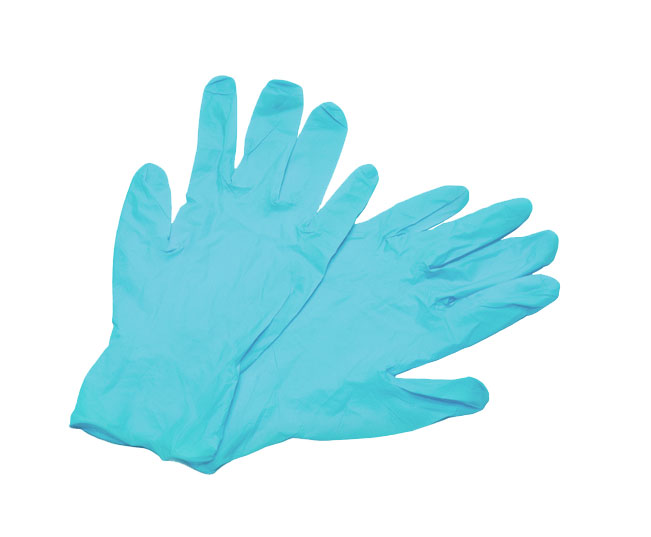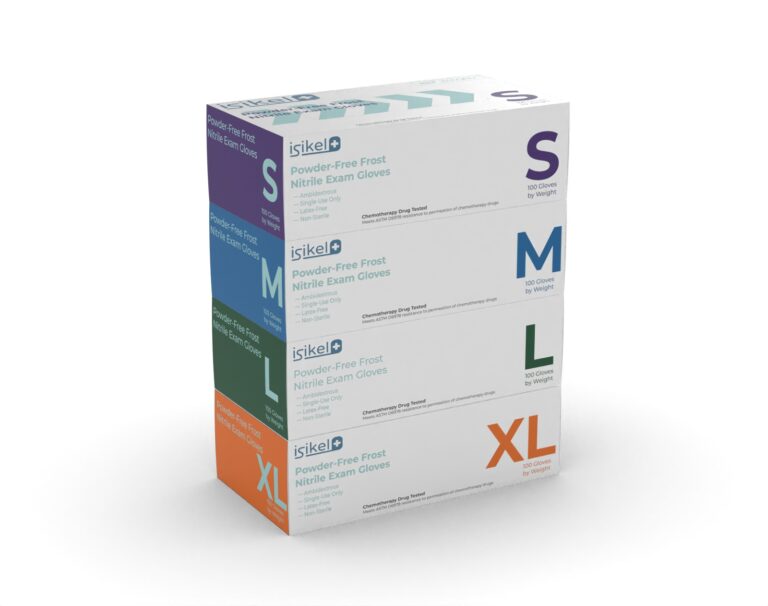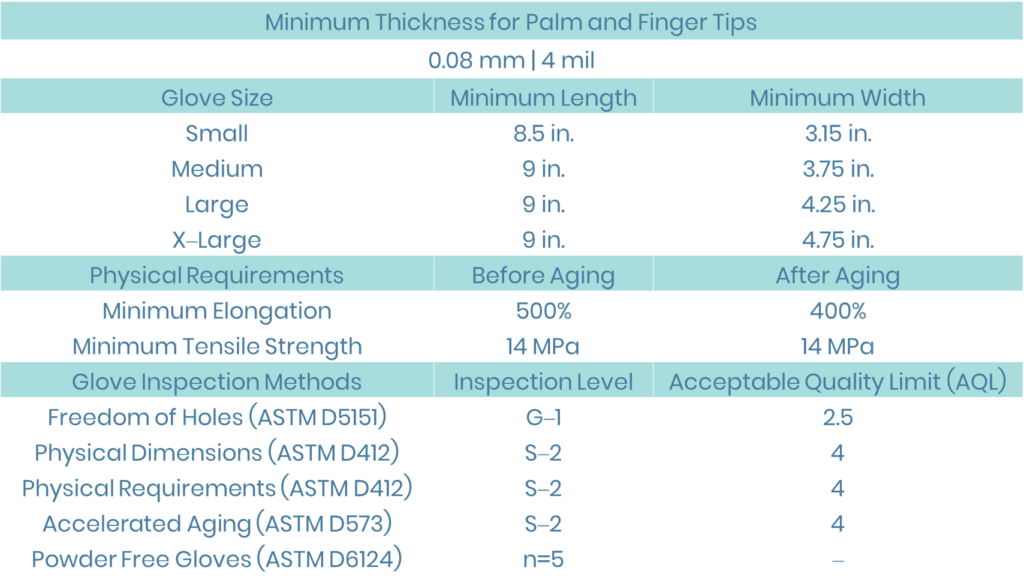Nitrile Gloves
Manufactured in the USA
In 2023 isikel will start production of high quality medical nitrile gloves.
Isikel is prepared and ready to supply you with various sizes of nitrile gloves. Reach out to one of our reps here to start your order or learn how we can help get you domestically made nitrile gloves and other supplies you need.

The U.S. has experienced essential PPE shortages.
Between 2019-2020, the total annual global demand doubled from 290 billion to 585 billion. The increase in global demand is only going up year after year even after the COVID-19 pandemic is in the past.
The COVID-19 Global Pandemic has exposed holes in our PPE supply chain.
Our nitrile glove factory in Katy, TX will be able to produce up to half billion top-quality domestic nitrile gloves per year.

Features
-
Single use, disposable nitrile gloves
-
Non-Sterile
-
Natural Latex-Free
-
Chlorine-Free
-
Powder-Free
-
Ambidextrous
-
Bisque Finish
-
Aqua in color
Meets or Exceeds standards set by:
-
ASTM 6319 Physical Properties Testing – May 2022
-
ASTM 6978 Chemo Drug Permeation Testing – Aug 2022
-
ASTM 1671 Resistance to Viral Permeation – Aug 2022
-
ISO 10993-10 Irritation & Skin Sensitization – Mar 2022
-
ISO 10993-11 Acute Systemic Toxicity – Mar 2022
-
ISO 10993-23 Primary Skin Irritation – Mar 2022

Specifications


What are Nitrile Gloves?
Nitrile gloves are made of a rubber, synthetic polymer that is derived from acrylonitrile (ACN) and butadiene. They are widely used through the medical community as an alternative to latex gloves.
How Long Have Nitrile Gloves Been on the Market?
The actual nitrile glove was invented in the 1980s, and first patented in 1991. However, the actual rubber, Nitrile Butadiene Rubber (NBR) was first patented nearly over 40 years earlier in 1934.
What are Nitrile Gloves Used For?
While nitrile gloves are known to be particularly useful in the medical industry, various industries have quickly become acclimated to the use of these gloves outside of the medical realm. They are often used as a form of PPE giving hands protection against a range of substances in chemical labs including many corrosive acids, bases, and organic solvents. These gloves are also appropriate for food handling and processing.
Who Can Use Nitrile Gloves?
Nitrile gloves are preferred by professionals in the Medical & Healthcare, Automotive, Construction, Food & Beverage, Oil & Gas, Heath & Beauty, Pharmaceuticals, Janitorial & Maintenance, and Metal & Machinery industries.
Why Should You Choose Nitrile Gloves?
Nitrile gloves are a good alternative. They offer a great level of protection, but without the same allergens that are associated with latex
- 3 times the puncture resistance of latex
- Strong protection and resistance against chemicals
- Soft, flexible, and comfortable
- Latex-free
- Longer shelf life
What are the Benefits of Nitrile Gloves?
They are disposable, latex-free, naturally latex-free, chlorine-free, powder free, and hypoallergenic.
What Can Nitrile Gloves Protect Against?
Nitrile gloves are known to be more solvent resistant, and have the ability to withstand ISO propyl alcohol. They offer resistance to oils, petroleum fuels, and acids, while also offering some of the same protections from cuts, punctures, and chemicals.
What Sizes Do Nitrile Gloves Come in?
Isikel has gloves available in 4 different sizes: Small, Medium, Large, X-Large.
How is Isikel Contributing to the Nitrile Glove Market?
Our new nitrile glove factory in Katy, TX is able to manufacture a half billion top-quality, nitrile gloves per year.
What Standards Should Nitrile Gloves Meet?
Our gloves also meet or exceed standards set by:
- ASTM 6319 Physical Properties Testing – May 2022
- ASTM 6978 Chemo Drug Permeation Testing – Aug 2022
- ASTM 1671 Resistance to Viral Permeation – Aug 2022
- ISO 10993-10 Irritation & Skin Sensitization – Mar 2022
- ISO 10990-11 Acute Systemic Toxicity – Mar 2022
- ISO 10993-23 Primary Skin Irritation – Mar 2022

